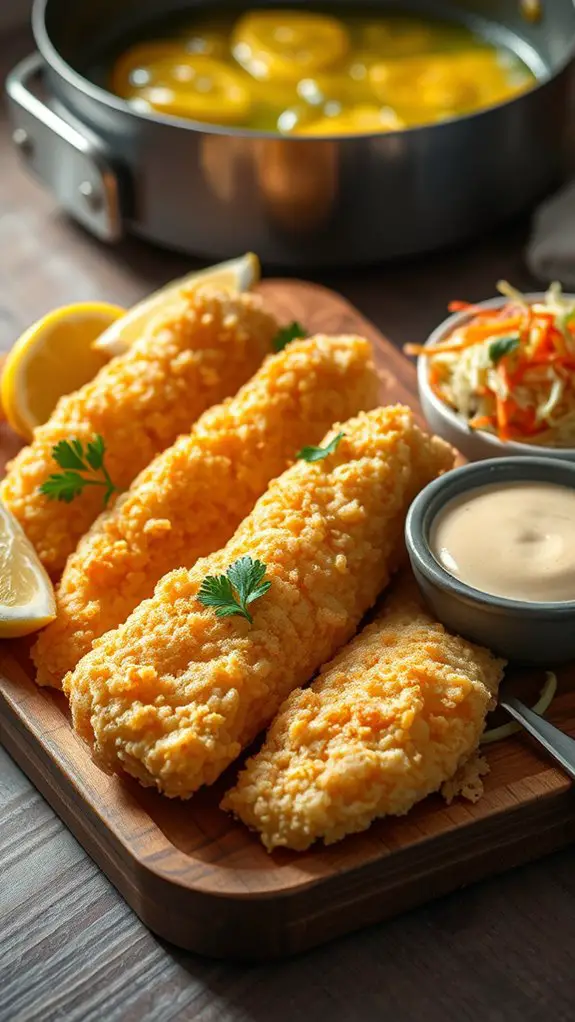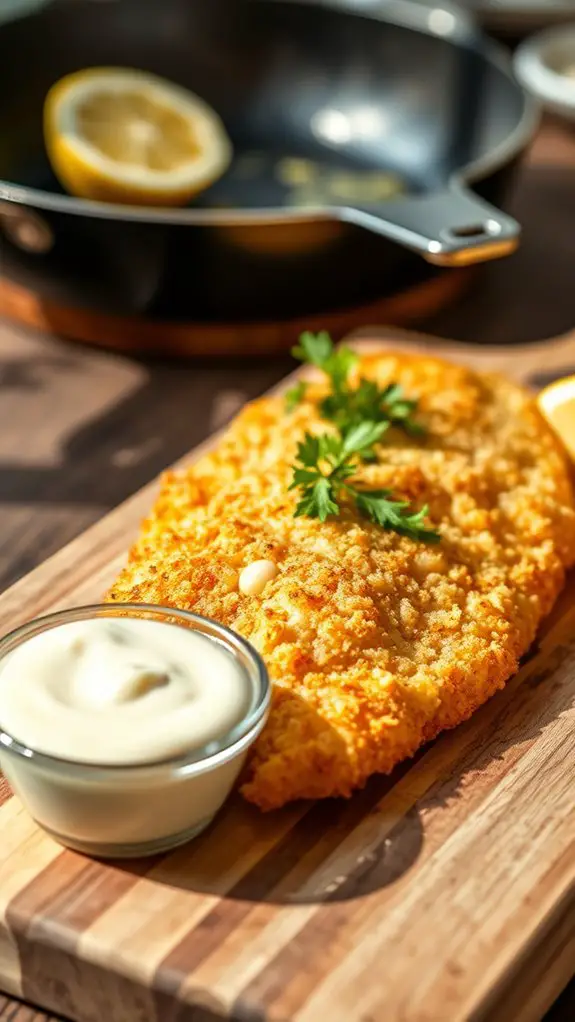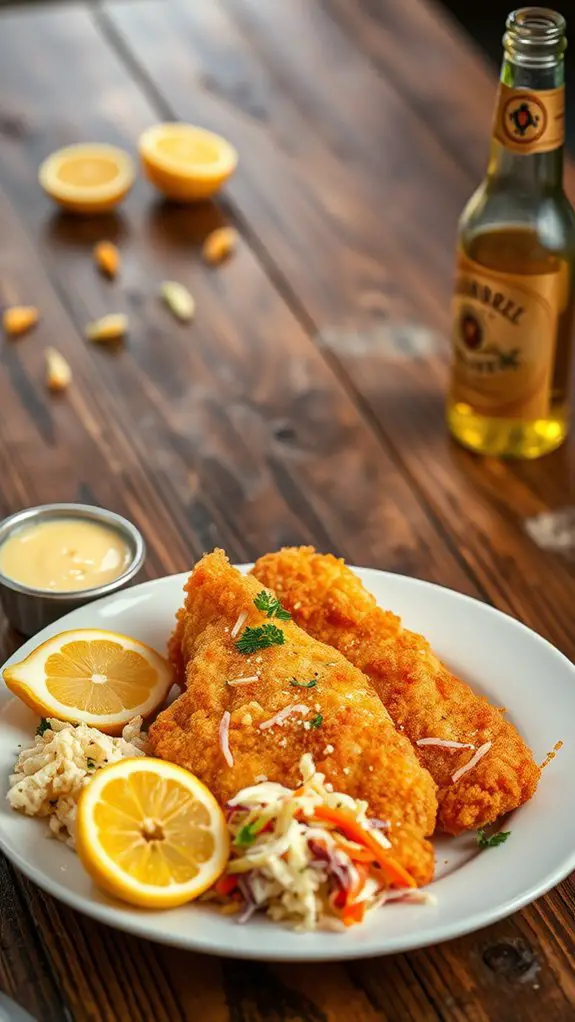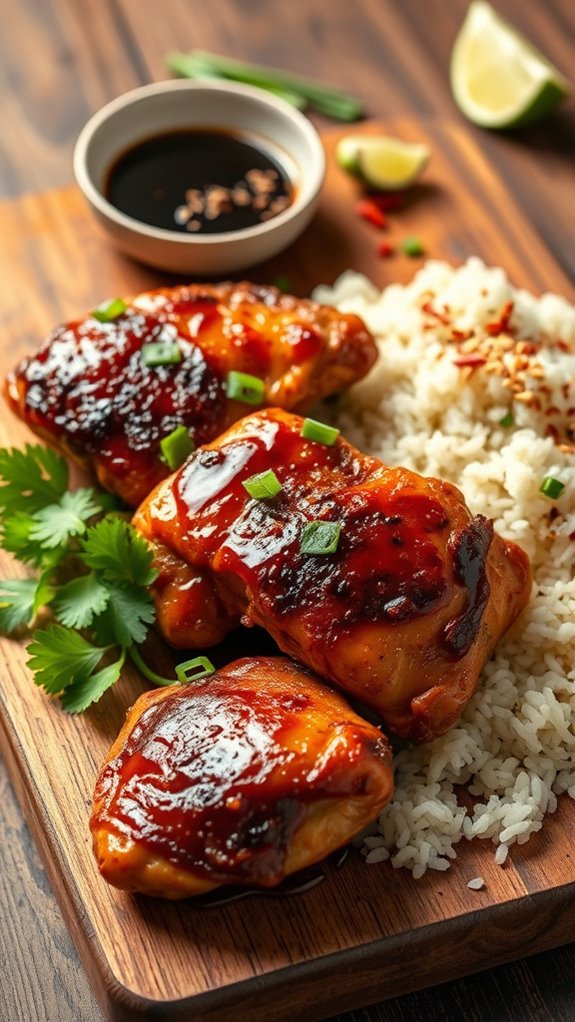Battered Fish

Did you know that the battered fish industry is worth over $3 billion globally? It's a beloved British dish that's stood the test of time, but its high caloric content means you've got to enjoy it in moderation. Discover the history, recipe, and nutritional guide to make the most of this crispy, golden seafood classic.
History

Although the origins of battered fish can be traced back centuries, the modern form of this dish gained widespread popularity in the United Kingdom during the 19th century.
Its culinary origins are rooted in the coastal regions, where access to fresh seafood and the development of frying techniques converged.
Over time, battered fish evolved, reflecting the cultural significance of this comfort food within British cuisine.
Today, it remains a staple, with regional variations and innovative interpretations continuing to shape its enduring presence in the country's culinary landscape.
Recipe

Battered fish is a classic dish that's easy to prepare at home. The crispy golden batter perfectly complements the tender, flaky fish, making it a crowd-pleasing meal. Whether you're in the mood for a comforting dinner or hosting a casual gathering, this recipe is sure to delight.
The key to excellent battered fish is striking the right balance between a light, airy batter and perfectly cooked fish. With just a few simple ingredients and a bit of frying, you can create a dish that rivals your favorite seafood restaurant.
Ingredients:
- 1 lb white fish fillets (such as cod, haddock, or tilapia), cut into 4-6 inch pieces
- 1 cup all-purpose flour
- 1 teaspoon baking powder
- 1 teaspoon salt
- 1/2 teaspoon black pepper
- 1 cup cold club soda or beer
- Vegetable or canola oil for frying
Instructions:
Heat 2-3 inches of oil in a large, heavy-bottomed pot or Dutch oven to 350°F. In a medium bowl, whisk together the flour, baking powder, salt, and pepper. Gradually whisk in the club soda or beer until a smooth, slightly lumpy batter forms.
Dip the fish pieces into the batter, allowing any excess to drip off. Carefully lower the battered fish into the hot oil and fry for 2-3 minutes per side, or until golden brown and crispy. Transfer the fried fish to a paper towel-lined plate to drain.
For best results, serve the battered fish immediately while hot and crispy. The light, airy batter and flaky fish make this dish a true delight. Enjoy your homemade battered fish with your favorite dipping sauces, lemon wedges, and a fresh salad or coleslaw.
Nutritional Guide
While the crisp, golden batter and tender, flaky fish make battered fish a delightful dish, it's important to evaluate its nutritional profile. Battered fish is relatively high in calories, with a single serving containing around 300-400 calories.
However, it also offers health benefits, as fish is a rich source of lean protein and omega-3 fatty acids. These nutrients support heart health and brain function.
When enjoying battered fish, be mindful of portion sizes and consider pairing it with nutrient-dense sides like steamed vegetables to create a more balanced meal.
With proper portion control and a focus on overall dietary quality, battered fish can be incorporated into a healthy lifestyle.
Final Thought
Ultimately, the healthfulness of battered fish depends on your overall dietary habits and lifestyle.
While battered fish can be part of a balanced diet, it's essential to take into account cooking tips and serving suggestions. Opt for baking or air-frying over deep-frying to reduce excess fat and calories.
Pair battered fish with fresh vegetables and whole grains for a more nutrient-dense meal. Moderation is key – enjoy battered fish as an occasional treat, not a dietary staple.





